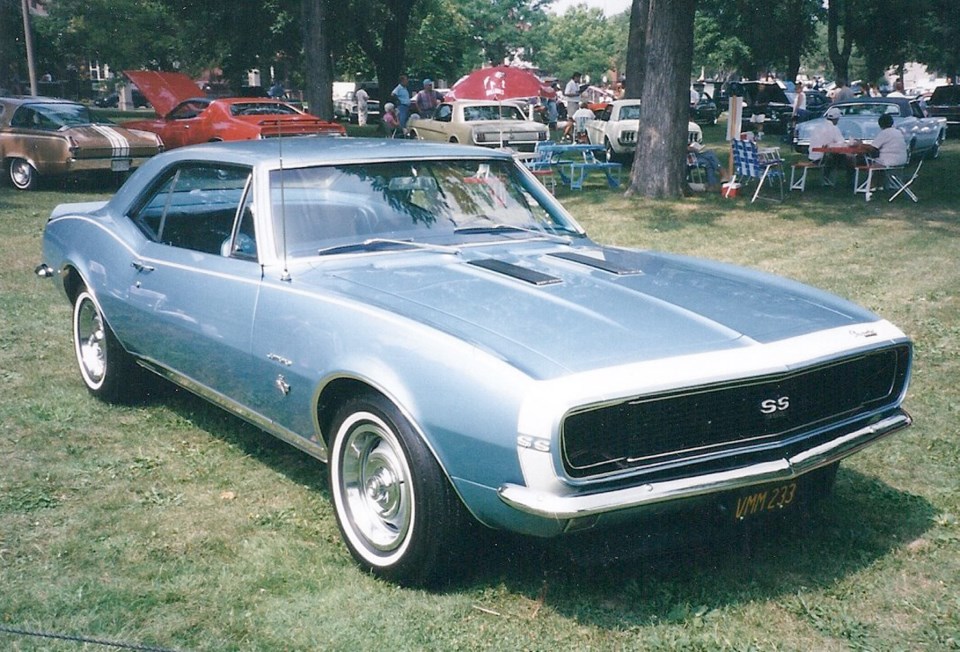Ford Motor Co.’s introduction of the sporty Mustang in April 1964 caught the competition flat-footed. By draping a nicely styled, long-nose, short-deck 2+2 body over inexpensive compact Falcon running gear, Ford scooped the industry.
In the process, it set in motion a new automotive genre called the “pony car,” and when the Mustang arrived, no one felt the sting of being left behind more keenly than Ford’s traditional rival, Chevrolet.
Chevrolet had nothing to compete with the Mustang. The rear-engined air-cooled Corvair Monza that Chevrolet had created for the sporty market segment, by dressing up a regular Corvair two-door, catered to a much more specialized audience.
And besides, the Corvair was on the brink of a nasty surprise, the result of Ralph Nader’s 1965 book Unsafe At Any Speed. It gave the Corvair the most savage attack ever administered to a single model, and Corvair sales went into steep decline until it was discontinued in 1969.
And since the Corvette sports car was too powerful, expensive and specialized for the pony-car market, Chevrolet immediately set to work to develop a Mustang competitor. It would be called the Camaro, and to facilitate its creation, they did the same as Ford by borrowing components from existing models.
The base engine was the 3.8-litre, overhead-valve, inline six from the compact Chevy II and intermediate Chevelle. The single leaf “Mono-Plate” rear springs came from the Chevy II and the coil-spring front suspension was lifted pretty well intact from the Chevelle. Unit construction was used aft of the windshield, with a subframe extending forward for suspension and engine mounting.
Even using existing components, it took Chevrolet two-and-a-half years to develop its Mustang rival. The Camaro arrived in the fall of 1966 as a 1967 model, and it was apparent that the stylists had been more daring than the engineers.
While it was a conventional front-engine, rear-drive four-seater (no more rear engines for Chevrolet), the body was a thing of beauty. It was a cleanly sculpted, crisply styled piece of automotive art. With an appearance that was smoother and less angular than the Mustang’s, it also looked more aerodynamic, although that received little attention in those pre-oil-crises, cheap-gasoline days.
The Camaro’s dimensions were within fractions of the Mustang’s. The Camaro’s wheelbase of 2,746 millimetres was almost identical to the Ford’s 2,743 mm. Other measurements on the Camaro were very close at 25 mm longer, 41 mm wider and 20 mm lower. The 1,542-kilogram Mustang was 86 kg heavier when both were V-8-equipped.
Both cars had inline six-cylinder engines as standard power, with the Camaro’s 4.1-litre larger than the Mustang’s 3.3. With 140 horsepower, the Chevrolet six was 20 horsepower more powerful.
The Camaro took another chapter out of Ford’s book by offering an extensive array of options. Inside, Camaro buyers could add items such as consoles, stereos and power windows, while outside they could opt for the SS (Super Sport) and RS (Rally Sport) packages, which included a wide stripe around the nose and disappearing headlights. Both cars came as hardtops or convertibles.
Under the skin, the Camaro offered a array of powertrains, including three- and four-speed manual transmissions or an automatic. Buyers could choose all the way up to the blockbuster 6.5-litre, 325-horsepower V-8. Ford had not been sleeping on power either; the Mustang’s hottest option was a 6.4-litre, 335-horsepower V-8.
The inevitable performance comparisons were made and the two cars fitted with the big V-8s proved to be identical in zero to 100 km/h acceleration. Car Life reported 7.8 seconds for the Mustang 390, the same as the Camaro SS 350. The Camaro had a little higher top speed at 193 km/h compared with 182 km/h for the Mustang.
Ford was on a sales roll with the Mustang, selling close to half a million in 1967. The Camaro couldn’t get up to speed fast enough to match that sales figure, and the Mustang outsold the first-year Camaro by about four to one. Camaro did better in 1968 with 235,151, although still short of the Mustang’s 317,148.
The Camaro, and its corporate sibling Pontiac Firebird, went through several generations until flagging sales prompted General Motors to phase out Camaro/Firebird production at its Ste. Therese, Que., plant in 2002. Ford stayed the course with the Mustang.
GM pony car fans were sad to see them go, and they became popular collectibles. But Camaro enthusiasts are happy again because General Motors reinstated the Camaro as a 2010 model, complete with retro styling cues.



